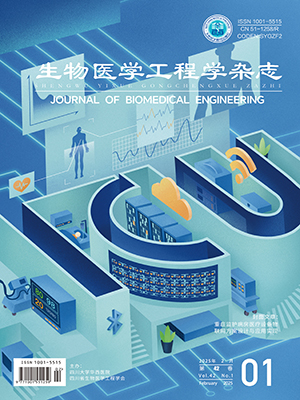| 1. |
Jamal A, Homa D M, O'connor E, et al. Current cigarette smoking among adults—United States, 2005–2014. MMWR Morb Mortal Wkly Rep, 2015, 64(44): 1233-1240.
|
| 2. |
朱卫华, 岳晓军, 蓝芬, 等. 住院吸烟患者的戒烟干预效果评价. 实用心脑肺血管病杂志, 2013, 21(5): 21-23.
|
| 3. |
Kanteti R, Dhanasingh I, El-Hashani E, et al. C. elegans and mutants with chronic nicotine exposure as a novel model of cancer phenotype. Cancer Biol Ther, 2016, 17(1): 91-103.
|
| 4. |
Zanchi D, Brody A L, Montandon M L, et al. Cigarette smoking leads to persistent and dose-dependent alterations of brain activity and connectivity in anterior insula and anterior cingulate. Addict Biol, 2015, 20(6): 1033-1041.
|
| 5. |
Gertz H, Hilger M, Hegele M, et al. Violating instructed human agency: An fMRI study on ocular tracking of biological and nonbiological motion stimuli. Neuroimage, 2016, 138: 109-122.
|
| 6. |
Yee J R, Kenkel W M, Kulkarni P, et al. BOLD fMRI in awake prairie voles: A platform for translational social and affective neuroscience. Neuroimage, 2016, 138: 221-232.
|
| 7. |
Kirk U, Gu Xiaosi, Sharp C, et al. Mindfulness training increases cooperative decision making in economic exchanges: Evidence from fMRI. Neuroimage, 2016, 138: 274-283.
|
| 8. |
Chen Hongbo, Wang Liya, King T Z, et al. Increased frontal functional networks in adult survivors of childhood brain tumors. Neuroimage Clin, 2016, 11: 339-346.
|
| 9. |
Siemann J, Herrmann M, Galashan D. fMRI-constrained source analysis reveals early top-down modulations of interference processing using a flanker task. Neuroimage, 2016, 136: 45-56.
|
| 10. |
Addicott M A, Sweitzer M M, Froeliger B, et al. Increased functional connectivity in an insula-based network is associated with improved smoking cessation outcomes. Neuropsychopharmacology, 2015, 40(11): 2648-2656.
|
| 11. |
Hawkshead B, Liebel S, Schwarz N, et al. Working memory and fMRI correlates of smoking cessation treatment outcome. Arch Clin Neuropsychol, 2014, 29(6): 577.
|
| 12. |
Versace F, Engelmann J M, Robinson J D, et al. Prequit fMRI responses to pleasant cues and cigarette-related cues predict smoking cessation outcome. Nicotine Tob Res, 2014, 16(6): 697-708.
|
| 13. |
莫少锋, 张晓凯, 陈洪波, 等. 基于功能磁共振成像的戒烟前后视觉诱导功能连接. 中南大学学报: 医学版, 2017, 42(1): 49-54.
|
| 14. |
Zang Yufeng, Jiang Tianzi, Lu Yingli, et al. Regional homogeneity approach to fMRI data analysis. Neuroimage, 2004, 22(1): 394-400.
|
| 15. |
Wang Chao, Shen Zhujing, Huang Peiyu, et al. Altered spontaneous activity of posterior cingulate cortex and superior temporal gyrus are associated with a smoking cessation treatment outcome using varenicline revealed by regional homogeneity. Brain Imaging Behav, 2016: 1-8.
|
| 16. |
Wu Guangyao, Yang Shiqi, Zhu Ling, et al. Altered spontaneous brain activity in heavy smokers revealed by regional homogeneity. Psychopharmacology (Berl), 2015, 232(14): 2481-2489.
|
| 17. |
Tang Jinsong, Liao Yanhui, Deng Qijian, et al. Altered spontaneous activity in young chronic cigarette smokers revealed by regional homogeneity. Behav Brain Funct, 2012, 8(1): 44.
|
| 18. |
Song Xiaowei, Dong Zhangye, Long Xiangyu, et al. REST: a toolkit for resting-state functional magnetic resonance imaging data processing. PLoS One, 2011, 6(9): e25031.
|
| 19. |
Liang Peifeng, Zhang Han, Xu Yachao, et al. Disruption of cortical integration during midazolam-induced light sedation. Hum Brain Mapp, 2015, 36(11): 4247-4261.
|
| 20. |
McClernon F J, Kozink R V, Lutz A M, et al. 24-h smoking abstinence potentiates fMRI-BOLD activation to smoking cues in cerebral cortex and dorsal striatum. Psychopharmacology (Berl), 2009, 204(1): 25-35.
|
| 21. |
Ding Xiaoyu, Lee S W. Changes of functional and effective connectivity in smoking replenishment on deprived heavy smokers: a resting-state FMRI study. PLoS One, 2013, 8(3): e59331.
|
| 22. |
Claus E D, Blaine S K, Filbey F M, et al. Association between nicotine dependence severity, BOLD response to smoking cues, and functional connectivity. Neuropsychopharmacology, 2013, 38(12): 2363-2372.
|




